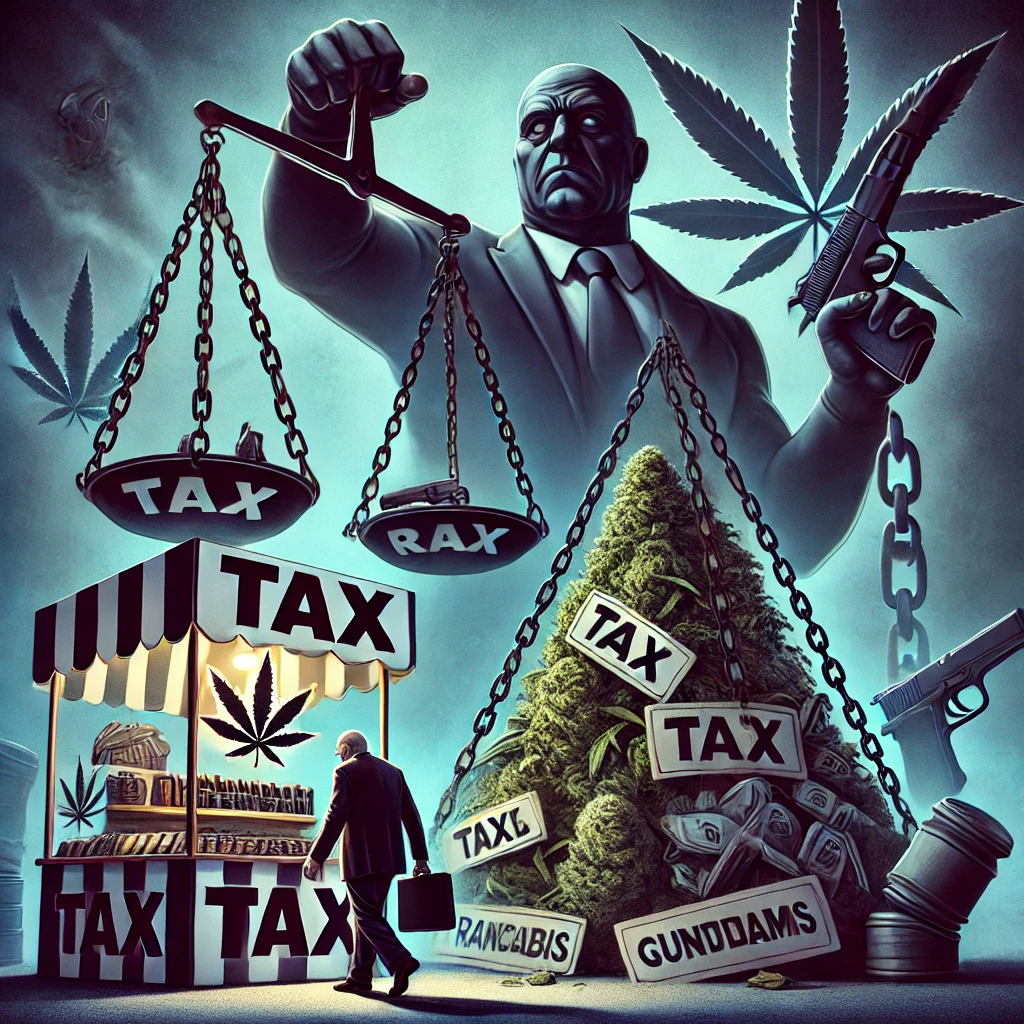The National Firearms Act of 1934 and Cannabis Taxation: A Tool for Prohibition in Disguise
Throughout American history, taxation has been wielded as a weapon of prohibition, cloaked in the guise of regulatory measures. A prime example of this strategy is the 1934 National Firearms Act (NFA), which imposed a $200 tax on certain firearms and accessories. While seemingly a revenue measure, this tax was, in reality, a calculated attempt to price these items out of legal reach, effectively serving as a de facto ban. Fast forward to the modern era, and a strikingly similar approach is being applied to cannabis through exorbitant taxation schemes at the state and potentially in the future federal levels. Although cannabis legalization has spread across the United States, the excessive taxes placed on legal cannabis products mirror the NFA’s goal—not merely to generate revenue, but to maintain a form of prohibition.
The National Firearms Act of 1934: Taxation as Prohibition
The NFA was enacted during the height of Prohibition-era crime, targeting weapons associated with organized crime, such as machine guns, short-barreled rifles, and suppressors. Rather than outright banning these items—a move that may have faced significant constitutional challenges—Congress imposed a steep $200 tax on each transfer or manufacture of these weapons. In 1934, $200 was an exorbitant amount, equivalent to over $4,500 today, effectively making legal ownership inaccessible to most Americans.
The NFA didn’t stop at financial deterrence; it also required extensive paperwork, registration, and government oversight, further discouraging compliance. This allowed law enforcement to arrest those who possessed untaxed firearms, ensuring that the legislation had the practical effect of prohibition while maintaining a veneer of legality.
Cannabis Taxation: A New Age of Economic Prohibition
The parallels between the NFA’s use of taxation to curb firearm ownership and modern cannabis taxation policies are striking. While states have embraced cannabis legalization, many have implemented oppressive tax rates that make legal cannabis products far more expensive than illicit alternatives. Between state excise taxes, cultivation taxes, local taxes, and possibly future federal tax burdens under IRS Code 280E, the total tax burden on legal cannabis businesses can exceed 40%—in some cases, even higher.
The federal government still considers cannabis a Schedule I controlled substance, which means cannabis businesses are barred from deducting normal business expenses under IRS Code 280E. This makes profitability nearly impossible, pushing many entrepreneurs to either abandon the legal market or resort to creative (and often legally dubious) workarounds. Meanwhile, untaxed cannabis remains a target for law enforcement, much like how illegal moonshine distillers were pursued while government-taxed liquor remained available.
A Strategy of Control, Not Revenue
While at first glance, these excessive taxes on cannabis might appear to be a simple cash grab by the government, they serve a deeper function: controlled prohibition. Just as the NFA tax was not meant to fund government operations but rather to deter firearm ownership, cannabis taxation schemes aim to restrict access to legal cannabis while keeping illicit sales alive for continued enforcement. By making legal cannabis prohibitively expensive, authorities ensure that a thriving untaxed market remains, providing justification for continued arrests and crackdowns.
This tactic ensures that the War on Drugs does not fully end; rather, it morphs into a different battle—one where compliance is met with unbearable financial strain and noncompliance is met with criminal penalties. This keeps the justice system entangled in cannabis enforcement, allowing law enforcement agencies to continue receiving funding for anti-drug operations, much like the continued prosecution of untaxed firearms owners under the NFA.
Conclusion
Whether it’s firearms in 1934 or cannabis today, taxation has long been weaponized as a method of backdoor prohibition. By setting tax rates at punitive levels, the government effectively bans products without outright making them illegal, maintaining control over those who choose to operate outside of its restrictive framework. Until cannabis is treated like any other legal commodity—without oppressive taxation and regulatory barriers—it will remain in the same legal limbo as NFA-restricted firearms: technically legal but functionally prohibited for many. The lesson is clear—whenever the government imposes extreme taxation on a product, it is rarely about revenue and almost always about control.




